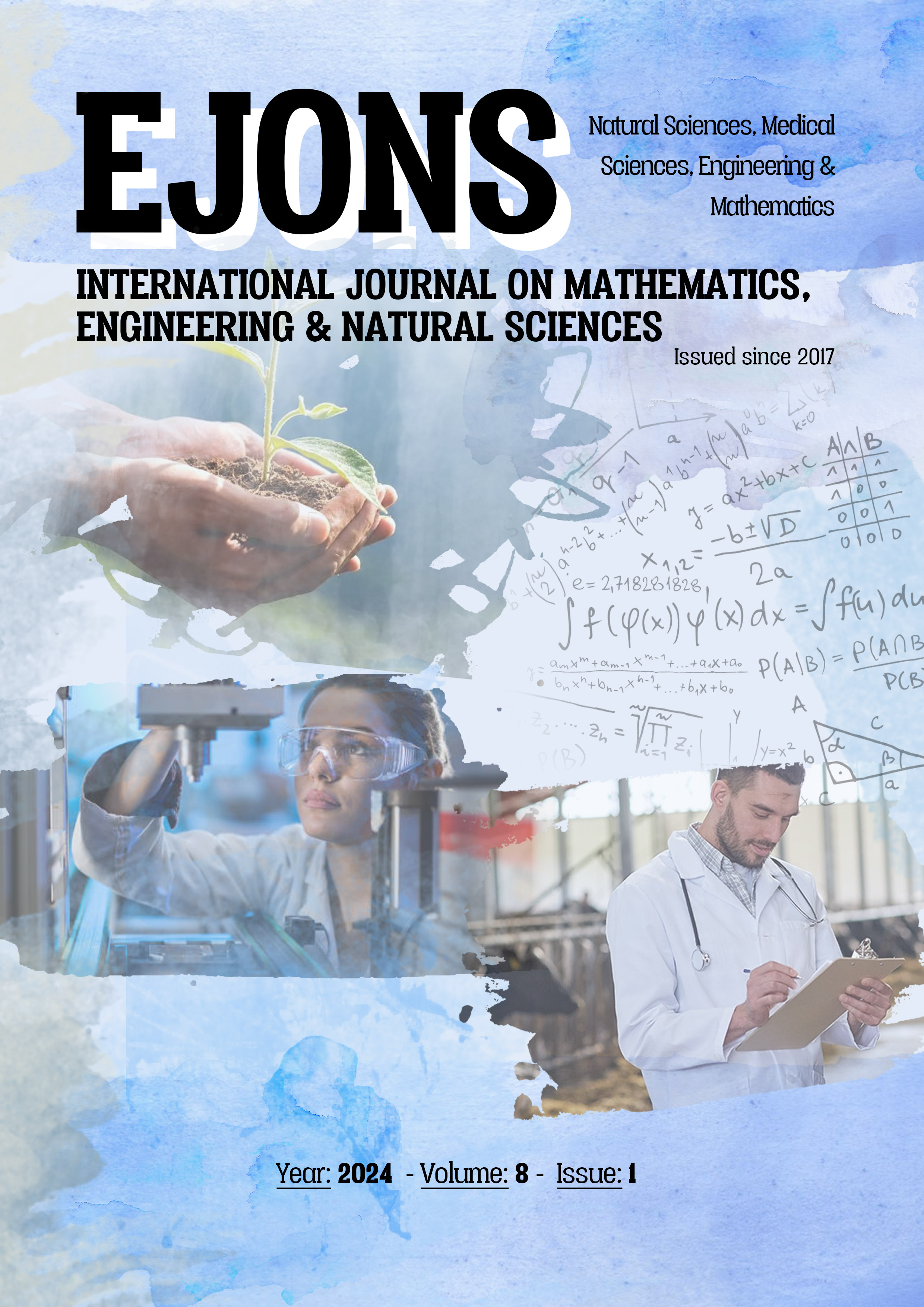Evaluation of the Use of Traditional and Complementary Medicine Practices and Knowledge Levels of Individuals
DOI:
https://doi.org/10.5281/zenodo.10813064Keywords:
Nursing, Knowledge, Traditional and Complementary MedicineAbstract
The aim of this study is to evaluate the use of Traditional and Complementary Medicine practices and knowledge levels of individuals. This study is cross-sectional and descriptive. The sample of the study consisted of 366 individuals aged 18 years and over who agreed to participate in the study. Data were collected from individuals in the form of an online questionnaire. IBM SPSS 26.0 statistical software program was used for data analysis. The correct response rate of individuals to the question explaining phytotherapy was found to be 76.2%. When it comes to Traditional and Complementary Medicine practices, the method that comes to mind first is cupping with the highest rate (50%), and if they had the option to try Traditional and Complementary Medicine practices, they stated that they would prefer cupping with the highest rate (29.2%). 42.1% of the individuals stated that they did not use any of the Traditional and Complementary Medicine practices, and 20.5% stated that the method they benefited the most from Traditional and Complementary Medicine practices was cupping. 62.3% of the individuals stated that the side effects of herbal medicines were much less than normal medicines, 73.8% had not had cupping before, 12.5% had benefited from cupping, and 11.5% had someone outside of health perform cupping. Regarding leech treatment, 65.8% of the individuals stated that leech is beneficial because it absorbs dirty blood, while 89.6% stated that they did not have leech treatment. 6.3% of the individuals stated that they benefited from leech treatment, 6.3% stated that they had a non-health person apply it, 45.4% said that Traditional and Complementary Medicine practices were partially beneficial, 39.6% said that they were beneficial. As a result, a large proportion of individuals think that Traditional and Complementary Medicine practices are effective. However, the number of individuals who have Traditional and Complementary Medicine practices performed by individuals other than physicians is also high. In this case, nurses, who are health professionals, have important duties in terms of informing and counseling individuals. However, nurses should have information themselves before providing this information to individuals. Traditional and Complementary Medicine practices should be included in the undergraduate education of nurses and in the in-service training of nurses working in the active field, and experimental studies on Traditional and Complementary Medicine practices should be increased.
References
Akalın, B., İrban, A., Özargun, G. (2023). Türkiye’de Geleneksel ve Tamamlayıcı Tıp Uygulamalarının Mevcut
Standartları ve İyileştirme Önerileri. Sağlık Profesyonelleri Araştırma Dergisi, 5(1), 49-69.
DeVellis, R. F. 2014, Ölçek Geliştirme Kuram ve Uygulamalar (T. Totan, Çev. Ed.), Ankara: Nobel.
Ersöz, M., Gözüyeşil, E., Sürücü, Ş.G. (2024). Doğumda Geleneksel ve Tamamlayıcı Tıp Uygulamaları ve Ebelerin
Rolleri. Mersin Üniversitesi Tıp Fakültesi Lokman Hekim Tıp Tarihi ve Folklorik Tıp Dergisi, 14(1), 38-49.
Ji J, Guo J, Chi Y, Su F. (2024). Cancer Pain Management with Traditional Chinese Medicine: Current Status and
Future Perspectives. Am J Chin Med., 26, 1-13. doi: 10.1142/S0192415X24500058.
Kaptanoğlu, R.Ö. ve Tosun N. (2022). Türkiye ve Dünyada Alternatif-Tamamlayıcı Tıp Kullanımı. Atlas Sosyal
Bilimler Dergisi, 1(9), 1-9.
Karadeniz, H., Gündüz, C.S., Gurkan, O.C. (2023). İnfertilitede Kanıta Dayalı Biyolojik Temelli Geleneksel ve
Tamamlayıcı Tıp Uygulamaları. Bandırma Onyedi Eylül Üniversitesi Sağlık Bilimleri ve Araştırmaları Dergisi,
(2), 181-192.
Kılıç, G., Polat, Ö., Eşbah, A.Ü. (2023). Cerrahi Tedavi Planlanan Lomber Disk Hernisi Hastalarında Geleneksel ve
Tamamlayıcı Tıp Tekniklerinin Kullanımı: Anket Çalışması. Sağlık Bilimlerinde Değer, 13(1), 67-72.
Köse, E., Oturak, G., Ekerbiçer, H. (2021). Bir grup tıp fakültesi öğrencisinde geleneksel ve tamamlayıcı tıp tutumu
ve sağlık okuryazarlığı ilişkisinin incelenmesi. Sakarya Tıp Dergisi, 11(2), 373-380.
Magdalena, L., Ilona, K., Julia, B., Agnieszka, K., Rafał, P. (2022). Opinions and Experiences of Physicians Regarding
Complementary and Alternative Medicine (CAM). A research report from Poland. Journal of Education,
Health and Sport, 12(8), 307–316.
Odabaş, Ö.K. ve Ağadayı, E. (2021). Aile Hekimliği Polikliniğine Başvuran Hastaların Geleneksel ve Tamamlayıcı
Tıp Uygulamaları Hakkında Bilgi ve Davranışları. Turkish Journal of Family Medicine and Primary Care,
(1), 121-128.
Resmi Gazete. Geleneksel ve Tamamlayıcı Tıp Uygulamaları Yönetmeliği (29158) 27 Ekim 2014. Internet:
https://www.resmigazete.gov.tr/eskiler/2014/10/20141027.pdf. Erişim: 12.02.2024.
Sönmez, C.I., Başer, D.A., Küçükdağ, H.N., Kayar, O., Acar, İ., Güner, P.D. (2018). Tıp Fakültesi Öğrencilerinin
Geleneksel ve Tamamlayıcı Tıp ile ilgili Bilgi Durumlarının ve Davranışlarının Değerlendirilmesi. Konuralp
Medical Journal, 10(3), 276-281.
Söylemez, F., Güneş, G. (2023). Aile Sağlığı Merkezine Başvuran Hastalarda Geleneksel Ve Tamamlayıcı Tıp
Kullanımı Ve Etkileyen Faktörler. Kırıkkale Üniversitesi Tıp Fakültesi Dergisi, 25(3), 421-430.
Şahin, H. ve Üşenti, B. (2023). Işgın (Rheum ribes L.) Bitkisinin Hipoglisemik Etkisi; Diyarbakır’da Bir Geleneksel
Tıp Uygulaması. Doğal Yaşam Tıbbı Dergisi, 5(2), 66-73.
Şencan, H. 2005, Sosyal Ve Davranışsal Ölçümlerde Güvenilirlik ve Geçerlilik, Ankara: Seçkin Yayıncılık.
Şimşek, D., Duman, F.N., Gölbaşı, Z. (2022). Sağlık Bilimleri Fakültesi Öğrencilerinin Premenstrual Sendrom İle Baş
Etmede Kullandığı Geleneksel ve Tamamlayıcı Tıp Uygulamaları. Mersin Üniversitesi Tıp Fakültesi Lokman
Hekim Tıp Tarihi ve Folklorik Tıp Dergisi, 12(1), 116-125.
Wang T, Li Q, Zhou Z, Liu J, Tao Y, Zhang Y, Zeng Y, Zhang S, Su J. (2024). Review of traditional uses, phytochemistry
and pharmacology of Tibetan Medicine tangchong. J Ethnopharmacol, 30, 319(Pt 1), 117129. doi:
1016/j.jep.2023.117129.
WHO. Traditional, Complementary and Integrative Medicine. Internet: https://www.who.int/healthtopics/
traditional-complementary-and-integrative-medicine#tab=tab_. Erişim: 12.02.2024
Xie H, Xie Z, Luan F, Zeng J, Zhang X, Chen L, Zeng N, Liu R. (2024). Potential therapeutic effects of Chinese herbal
medicine in postpartum depression: Mechanisms and future directions. J Ethnopharmacol, 324, 117785.
doi: 10.1016/j.jep.2024.117785.
Yousefi M, Reihani H, Heydari M, Nasimi Doost Azgomi R, Hashempur MH. (2024). Complementary and
alternative medicine use among cancer patients in Iran: A systematic review. Prev Med Rep., 39, 102644.
doi: 10.1016/j.pmedr.2024.102644.
Downloads
Published
How to Cite
Issue
Section
License
Copyright (c) 2024 EJONS INTERNATIONAL JOURNAL

This work is licensed under a Creative Commons Attribution-NonCommercial 4.0 International License.


